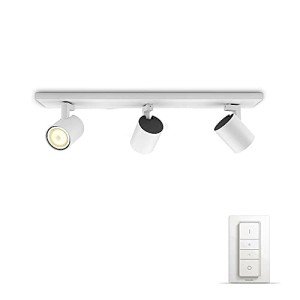The Ultimate Guide to Buying LED Lights in the UK
In the last few years, LED lights have actually surged in appeal due to their energy performance, durability, and versatility. As the UK moves towards more sustainable energy practices, numerous homeowners and businesses are making the switch from traditional incandescent and fluorescent bulbs to LED lighting. This article intends to direct readers through the procedure of purchasing LED lights in the UK, highlighting essential considerations, advantages, and often asked questions.
Understanding LED Lighting
What are LED lights?LED mean Light Emitting Diode. Unlike traditional bulbs, LED lights generate light through a semiconductor. This innovation is not just more energy-efficient however also produces less heat, lowering electricity expenses in the long run.
Advantages of LED Lights
Energy Efficiency
- LED lights utilize up to 80% less electrical power than traditional incandescent bulbs.
- They convert nearly all the energy they consume into light rather than heat.
Durability
- Average lifespan of LED lights is roughly 15,000 to 50,000 hours, considerably outliving traditional bulbs.
Environmental Impact
- Decreased energy usage lowers carbon footprints.
- LEDs include no harmful materials like mercury, making them eco-friendly.
Variety and Versatility
- Readily available in numerous shapes, colors, and brightness levels appropriate for different applications.
Instant Lighting and Dimming Capabilities
- LEDs light up quickly and can be dimmed for specific lighting requirements without flickering.
Secret Factors to Consider When Buying LED Lights
When searching for LED lights in the UK, it's necessary to think about numerous aspects to guarantee you purchase the best product for your needs.
1. Brightness Level
Brightness in LED lights is measured in lumens. Higher lumens show brighter lighting. Here's a fast recommendation:
| Wattage (Traditional Bulb) | Lumens (LED Equivalent) |
|---|---|
| 40W | 450 |
| 60W | 800 |
| 100W | 1600 |
2. Color Temperature
LEDs are available in various color temperatures, measured in Kelvin (K). Here's a breakdown of color temperature levels:
- Warm White (2700K - 3000K): Ideal for homes, develops a comfortable environment.
- Cool White (4000K - 4500K): Suitable for workspaces, supplying a clean, bright light.
- Daytime (5000K - 6500K): Mimics natural daylight, best for outdoor usage or particular task lighting.
3. Dimmability
Not all LED lights are dimmable. If you want the flexibility to adjust brightness levels, make sure that the LEDs you select work with dimmer switches.
4. Fixture Compatibility
Think about the kind of fixtures in which you'll be placing the LEDs. Common fitting enters the UK consist of:
- BAYONET (B22): Commonly utilized in households.
- Edison Screw (E27, E14): Popular for both decorative and general lighting.
- GU10: Often utilized for spotlights and recessed lighting.
5. Energy Rating
Inspect the energy score of the LED light. Most LED bulbs will be appreciated (A+ or higher) for energy efficiency.
6. Buy Smart Lighting UK -span & & Warranty Purchasing quality LED lights typically includes service warranties ranging from 1 to 5 years. A longer service warranty may show a more resilient product.
Where to Buy LED Lights in the UK
LED lights are commonly readily available throughout various platforms, including:
Physical Stores:
- DIY and home improvement stores like B&Q, Homebase, and Wickes.
- Supermarkets such as Tesco and Sainsbury's.
Online Retailers:
- E-commerce giants like Amazon and eBay.
- Specialized lighting websites like LED Hut or Lights4Fun.
Local Electrical Suppliers:
- Independent electric supply shops typically provide expert guidance.
Recommended Brands
When acquiring LED lights, think about credible brand names understood for their quality and development, such as:
- Philips
- Osram
- Sylvania
- GE Lighting
- IKEA
Regularly Asked Questions (FAQs)
1. Are LED lights actually worth the investment?Absolutely. While LED lights may have a higher in advance cost compared to traditional bulbs, their energy performance and long life expectancy imply they will save you money on energy costs gradually.
2. Can I use LED lights in my existing fixtures?Yes, as long as you select bulbs suitable with your fixtures (BAYONET, Edison Screw, GU10, and so on), you can quickly change traditional bulbs with LEDs.
3. Why are some LED bulbs more expensive than others?Rate differences can be credited to brand reputation, innovation (such as smart functions), energy performance ratings, and guarantee durations.
4. Do LED lights produce hazardous radiation?No, LED lights do not give off ultraviolet or infrared radiation and are thought about safe for home usage.
5. Can I recycle LED bulbs?Yes, many local councils have recycling programs for LED bulbs. Check regional guidelines for disposal directions.
Buying LED lights in the UK is a smart choice for those aiming to save energy, minimize expenses, and improve their lighting options. By thinking about factors such as brightness, color temperature level, fixture compatibility, and trusted brand names, buyers can with confidence make informed choices. Accepting LED technology is not only advantageous for individual homes and businesses, however it also adds to a more sustainable future for the environment. Whether you head to a regional store or browse online , the transition to LED lighting is an action towards a brighter, cleaner world.

